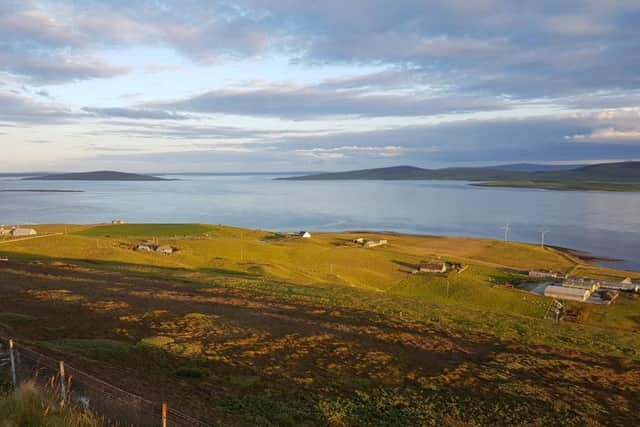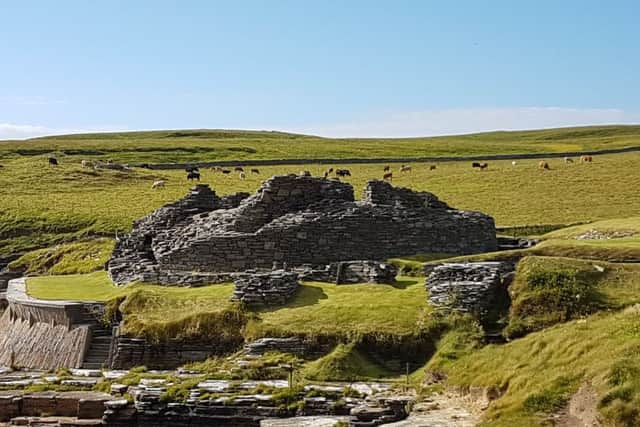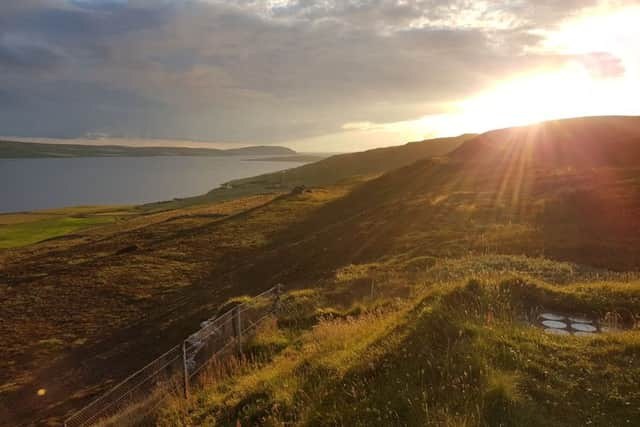Secrets of Orkney's '˜Egypt of the North' to be unlocked
Rousay is home to at least 160 archaeological sites with 5,500 years of history charted in less than a mile of its west coast.
Major sites of interest on Rousay include the Midhowe Cairn, a chambered communal burial space which was build around 3,500BC and nearby Midhowe Broch, an Iron Age residence that was occupied between 200BC and 200AD.


Advertisement
Hide AdRemnants of the Viking and Pictish period can also be found on the island with the 19th Century Highland Clearances also reflected through abandoned farms and churches.
Recent finds include a possible Iron Age settlement overlooking the sea at Swandro.
A team of international archaeologists have now arrived on Rousay to help unlock some of the questions still remaining about the distant past of this mysterious place.


The largest geophysics survey of the island will be conducted by an internationally renowned team from the Deutsches Archäologisches Institut Römisch-Germanische Kommission (DAI) based in Berlin.
They will work archaeologists from the University of the Highlands and Islands Archaeology Institute on the study.
Professor Jane Downes, director of the UHI Archaeology Institute said, “We are very pleased and excited to be involved in this major international project on Rousay and we are looking forward to seeing the results from the cutting-edge geophysics technology that the team from DAI have brought with them.”
Advertisement
Hide AdThe results from the survey will feed into the “Boyne to Brodgar” programme, a research project that examines Irish/Scottish Neolithic communities and their monuments.


UHI will work over the long term with the team from Berlin, with a memorandum of understanding to be signed between the two institutes.
Advertisement
Hide AdRousay will also host the Gateway to the Atlantic workshop that this week will bring together archaeological scientists working particularly on coastal erosion, climate change and heritage in the North Atlantic and Arctic.
Further archaeological survey work will also be carried out by experts from Historic Environment Scotland and UHI Archaeology Institute students.
“It is indeed an exciting time for archaeology in Orkney,” Professor Downes said.


The Midhowe Cairn, the longest and largest cairn in the Orkney Islands which is split into burial compartments, is one of the most fascinating sites on Rousay.
Built around 3,500 BC, it is now housed in a large building in order to protect it from the natural elements.
Known as the ‘Great Ship of Death’, excavation of the site uncovered the remains of 25 people, found in crouched positions either on or under the eastern shelves of the chamber.
Advertisement
Hide AdRousay is also where the Westness Brooch - a Celtic brooch dating from 750AD - was found.
The item was discovered at Westness Farm when the grave of a Viking woman and baby was unearthed as farmers dug a hole to bury a cow.
Advertisement
Hide AdThe brooch, which is made from silver-gilt and features gold filigree and inlaid amber, was still being used during the Viking period, around 100 years after it was made.


Other sites of interest on Rousay include an old Norse boat shed and slipway, known as a ‘noust’ in Old Norse. Two boat graves were later excavated nearby with each containing the remains of men, one who had four arrowheads in his body.
